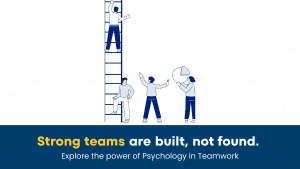Creating a High-Performance Culture: Leveraging the Pygmalion Effect in the Workplace
Have you ever been told by your parents to aim for 99% marks in an examination, so even if you fall a little short, say 94% or 95%, it’s still considered a great achievement? The expectations set by our parents regarding high exam scores profoundly impact how we approach our goals. These expectations are rooted in a firm belief in our abilities to fulfill what is expected of us. It’s not just about academics; the same principle of expectations applies to all aspects of life, whether personal or professional. When others have faith in our capabilities and expect us to succeed, most of the time it naturally shifts our mindset towards motivation and wholehearted performance.
This phenomenon is very similar to the Pygmalion Effect. Greek psychologists Robert Rosenthal and Lenore Jacobson introduced the concept of the Pygmalion effect. They stated that people’s behavior and performance can be influenced by the expectations others have from them, especially authority figures or those in positions of influence, such as managers, or leaders. In this blog, we will focus on how the Pygmalion Effect at the workplace contributes in creating a high-performance culture.
The Pygmalion Effect at the Workplace:
Let’s begin with understanding the Pygmalion Effect in the context of the workplace and its impact on employees. Has it ever happened to you that the high expectations set by your team leader or higher executive motivated you to perform better? Such instances highlight that the trust vested in employees can act as motivation, driving them to exceed expectations and go above and beyond in their efforts. It greatly influences employees’ behavior, mindset, and overall work ethic.
Positive expectations act as a powerful incentive, inspiring individuals to push their boundaries, take initiative, and strive for excellence. For instance, in an organization, the CEO consistently expresses confidence in the team’s creativity and problem-solving skills during brainstorming sessions. This encourages employees to bring innovative ideas to the table, leading to successful campaigns and a sense of ownership in their work. We will further explore in more detail how the Pygmalion Effect impacts employees’ performances.
- Positive Expectations: When leaders, managers, or colleagues have positive expectations about employees’ capabilities and potential, it communicates a belief in their competence.
- Self-Belief and Confidence: Positive expectations instill self-belief and confidence in employees. They start to view themselves as capable and competent individuals, which enhances their performance.
- Motivation to Meet Expectations: Employees feel motivated to meet set expectations and achieve goals.
- Increased Engagement: Employees become more engaged with their work when they experience positive expectations and feel a sense of purpose and fulfillment.
- Empowerment and Autonomy: Positive expectations empower employees to take ownership of their work and responsibilities as they develop a sense of autonomy.
By harnessing the power of the Pygmalion Effect, organizations can create an environment where positive expectations motivate employees to perform their best. High-performing employees contribute to better quality outputs, increased customer satisfaction, and a positive work environment. Ultimately, the cumulative impact of elevated employee performance propels the organization forward, driving success, and fostering a culture of excellence that fuels continuous growth and achievement.
Balancing Ambition and Realism:
Although setting higher expectations from employees can undoubtedly contribute to organizational success, it is important to be mindful while determining the extent of these expectations. Striking a balance between challenging and achievable goals is of the utmost importance. Unrealistic or unattainable expectations can lead to adverse consequences, both for employees and the organization.
Employees may feel overwhelmed, stressed, and demotivated, potentially resulting in decreased performance and increased turnover rates. Moreover, setting unattainable goals might lead to a sense of failure and disappointment, affecting employees’ confidence and commitment to the organization’s objectives. As leaders and managers, it is crucial to assess employees’ capabilities, resources, and external factors that may impact goal attainment. By being mindful of limitations and aligning expectations with reality, organizations can ensure a healthy work environment that fosters continuous growth, high performance, and sustainable success.
We have seen both the positive and negative sides of setting high expectations from employees. Let’s discuss some practical tips to foster the Pygmalion Effect in your organization in the right way.
Practical Tips to Foster the Pygmalion Effect in Your Organization:
- Trust and Autonomy: Demonstrate trust in employees by providing them with autonomy and decision-making authority. Trusting their judgment instills confidence and inspires them to perform at their best.
- Foster Positive Perception: Encourage leaders and colleagues to hold positive perceptions of employees’ abilities and potential. Emphasize the importance of focusing on employees’ strengths and recognizing their contributions.
- Avoid Misunderstanding: Misunderstandings can lead to misaligned expectations and negatively impact employee performance. Leaders and managers should provide detailed and unambiguous guidance, ensuring that employees fully comprehend their roles and responsibilities.
- Lead by Example: Lead by example and demonstrate the behavior and performance you expect from your team. Your actions set the tone for the workplace and influence employee performance.
- Recognise and Celebrate Achievements: Recognize and celebrate individual and team achievements openly. Publicly acknowledging successes reinforces positive behavior and encourages others to perform at their best.
In conclusion, by implementing these measures, organizations can create a work culture that embraces the Pygmalion effect, leading to increased motivation for employees and overall organizational success. Finally, to maintain a proactive approach to improvement, an organization must regularly administer employee surveys, allowing them to identify their motivation level and areas that need attention.
Traitfit offers Motivation Inventories that assess an individual’s attributes and his/ her desire to achieve goals and succeed in life, which is fuelled by their own aspirations, drives, and motives.
Connect with Traitfit, We can help you Progress!


